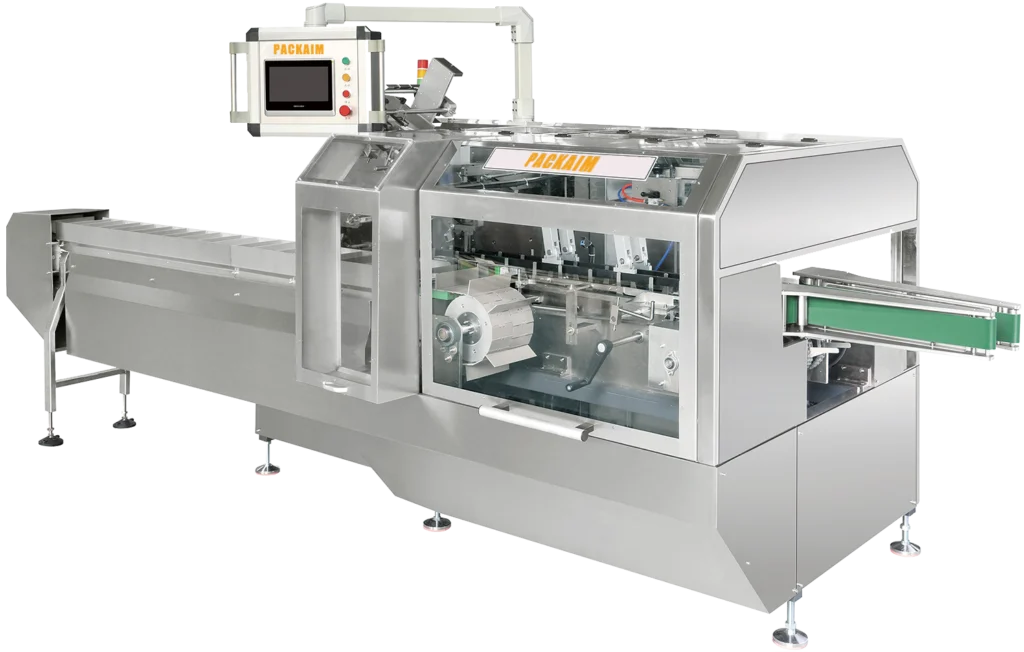Mastering Cartoning: A Comprehensive Guide to Packaging Efficiency
Efficient packaging is crucial for businesses shipping products to customers. Mastering cartoning, the process of loading items into cartons, can transform manufacturing productivity. In this post, I’ll explain cartoning to help your business improve.
Whether you’re looking to improve your existing wrapping processes or research these machines for the first time, you’ll find value in the information below. Let’s get started!
Table of Contents
Introduction to Cartoning in Packaging
As a packaging pro, I often get asked how to make cartoning more efficient. Cartoning is the process of putting products into cartons. It is a key step in getting items ready for shipping. With more e-commerce and want for green packaging, mastering cartoning matters.
Types of Cartoning Processes
There are three main types of cartoning. Each has pros and cons.
Manual
With manual cartoning, workers put items into cartons by hand. It allows flexibility but is slow for large volumes. Workers can check products and customize cartons. But it is tiring for workers over long shifts. Errors can happen when workers get tired.
Semi-Automatic
Semi-auto cartoning uses some machines. But people still oversee it and load items. Workers put products into funnels, conveyors or spinners. These orient and drop products into cartons. This is faster than manual cartoning. But worker speed still limits volume. Semi-auto systems also don’t customize cartons as easily.
Fully Automatic
Fully automated is an inline process. Machines handle product orienting, carton forming, filling, sealing, and labeling. Sensors and robotics precisely fill cartons at high speeds. This maximizes efficiency and volume. But the high cost means it suits large, standardized products. It also needs skilled technicians for maintenance.
Benefits of Automated Cartoning
Switching from manual to automated cartoning has many benefits:
- Faster filling improves efficiency and reduces labor needed. This also increases output and avoids damage.
- Higher speeds and less labor lower costs. Automation improves profit margins due to less waste too.
- Easy to scale up production.
- Workers can shift from repetitive tasks to higher-value work. Automating is safer too.
- Consistent sealing, labeling, and barcoding improves traceability and brand image.
Key Factors in Cartoning
Automating cartoning requires looking at:
Product Properties
How products are shaped, oriented, weighted and sized impacts machinery design. Discuss product details early with experts.
Volume and Speed Goals
Your output volumes and speed targets determine if manual, semi or fully automated cartoning works best. Look at current and future volumes.
Carton Materials
Carton strength, quality and size affect the method too. Consider graphics, shelf appeal, sustainability, and supply chain.
Cartoning Equipment and Machinery
The right equipment depends on your products, facility, and budget. Main types are:
- Vertical cartoners top load products into upright cartons. They work for light and medium items.
- Horizontal cartoners load products through hoppers and orienters. They handle fragile or multi-count products well.
- Wrap-around cartoners form cartons around products for tight, secure fits.
- Robotic carton loaders use sensors to gently pick and place items accurately.
- Integrated cartoning lines combine feeding, scanning, setup, filling, closing, and labeling. This maximizes efficiency.
Prioritize safety, flexibility, changeovers, and total cost over the cheapest initial price.
Business Success Stories With Automated Cartoning
Here are real-world examples:
- An Indonesian company cut labor costs 63% with integrated cartoning across 5 plants. This let staff move into production roles.
- A candy brand boosted output 340% with new wrap-around cartoners and automated feeding. They reached 150 cartons per minute.
- A biscuit factory added robotic cartoning cells. This lowered labor expenses 55% and sped up delivery.
Future Cartoning Technology and Trends
Key innovations in cartoning automation include:
- More flexible, precise robots.
- Sensors to monitor performance in real-time.
- AI and advanced vision for quick size and product changeovers.
- Sustainable materials and right-sized packaging to reduce waste.
- Easy to maintain equipment designed for total effectiveness.
Conclusion
Automating cartoning boosts speed, quality, costs, and productivity. Choosing solutions matched to your products and facilities is key. With the right strategy, cartoning automation can transform manufacturing and profits. Contact Packaim if you need help picking manual vs. automated cartoning or finding the perfect equipment!
Jason
I’m the author of this post, with over 10 years of expertise in the field. Should you seek insights or information about cartoning machines, I’m here to assist. Let’s connect and explore the world of packaging together.


One Response